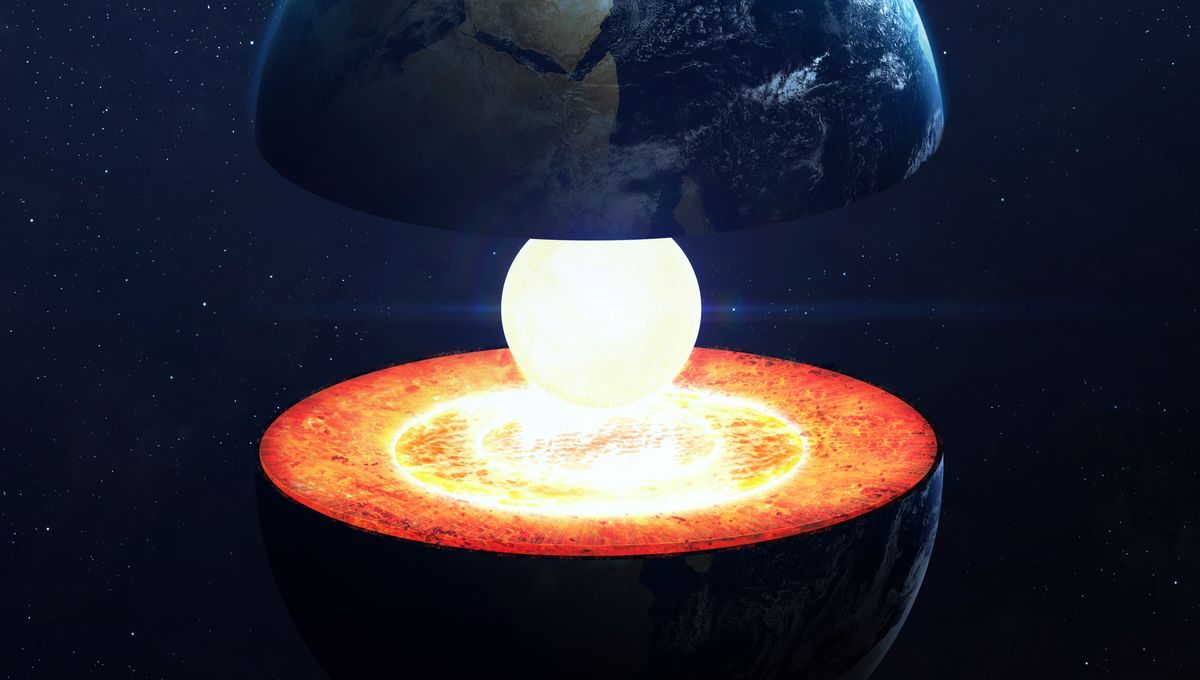
Think Earth is just a static rock? Dive deep, and you’ll find a dynamic world where metals leak, water seeps, and its insides churn.
Inside the belly of planet Earth, a giant solid ball of metal is surrounded by a swooshing layer of liquid iron and nickel, making up the two innermost stages of Earth’s geological layers. These furiously hot metals might not always stay put, though.
A study, published in the journal Nature Geoscience in 2020, suggested that iron isotopes might migrate into the rocky mantle, the next geological layer of Earth that starts at around 2,900 kilometers (1,800 miles) below Earth’s surface.
It’s extremely tricky to get samples of Earth’s deep mantle simply because of its extreme depth. So, instead, the scientists reached their findings by carrying out experiments and geodynamic modeling that showed how iron alloy liquids react under extremely high temperatures of 2,000°C (3,632°F) and intense pressure, much like the conditions of Earth’s interior.
The experiments demonstrated how iron isotopes migrate based on temperature gradients, with heavier isotopes migrating towards cooler regions. This effect, they said, is likely to cause metallic core material to infiltrate parts of the lowermost mantle.
“If true, the results suggest iron from the core has been leaking into the mantle for billions of years,” Charles Lesher, lead author of the 2020 study and professor emeritus of geology at UC Davis and professor of earth system petrology at Aarhus University in Denmark, said in a statement.
This isn’t the only part of the Earth’s interior that’s surprisingly dynamic. Just as material is likely to move from the core outwards, other materials are heading from the surface into the lower depths.
Other scientists have suggested that water from the Earth’s surface is being driven into the rocky mantle due to tectonic plate shifts.
A 2014 study suggested that the mantle transition zone, around 410 to 660 kilometers (255 to 410 miles) deep, contains a girthy layer that’s dense in ringwoodite. This vibrant blue mineral contains water, but not in the form of a liquid, gas (like vapor), or solid (like ice). Instead, it incorporates water in another molecular form within its crystal structure.
Nevertheless, ringwoodite does indicate the presence of a lot of water down there. The researchers estimated that if just 1 percent of rock in the mantle transition zone is H2O, that would be equivalent to nearly three times the amount of water in our oceans. In other words, most of the water on Earth might be inside its mantle, trapped within the crystal structure of ringwoodite.
All of these insights point to a greater truth about our planet. Viewed from the surface – or even from space – Earth can seem like a giant, unchanging monolith. But when you step back or look deeper, you realize this old rock is actually an ever-changing blob, constantly shifting in a state of flux.
Source Link: Planet Earth’s Core May Be "Leaking" Iron